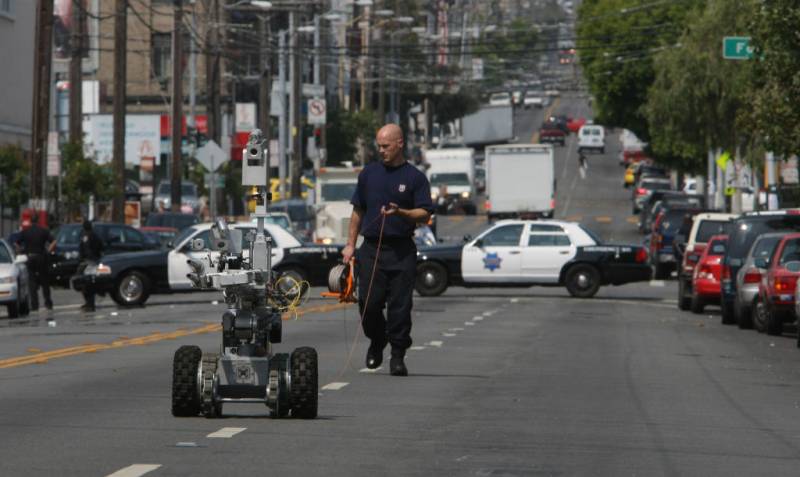Those second votes are usually procedural, foregone conclusions that pass by in a wink. Tuesday's vote was a rare exception.
The controversy around last week's vote grew so hot that one supervisor indicated he would flip his vote. Supervisor Gordon Mar, who lost his election to challenger Joel Engardio this past November, said he had a change of heart.
"I simply do not think arming robots and giving them license to kill will keep us safer," Mar said at Tuesday's meeting.
He wasn't the only one. A total of five supervisors who approved the "killer robot" policy, as it has been referred to, decided to flip the off switch on the literal remote-controlled killing machines this week.
Much has changed in seven days. San Francisco's vote has renewed a fierce national debate sparked years ago over the ethics of using robots to kill a suspect and the doors such policies might open. Largely, experts say, the use of such robots remains rare even as technology advances.
Michael White, professor in the School of Criminology and Criminal Justice at Arizona State University, said even if robotics companies present deadlier options at trade shows, police departments won't necessarily buy them. White said companies scrambled to equip body-worn cameras with facial recognition software, but departments didn't want them.
"Because communities didn't support that level of surveillance," White said. "It's hard to say what will happen in the future, but I think weaponized robots very well could be the next thing that departments don't want because communities are saying they don't want them."
Groups like the American Civil Liberties Union and the Asian Law Caucus voiced concerns about the policy after the vote, they said.
"This is a horror and an outrage," wrote one local group, called Wealth and Disparities in the Black Community, in an email to the Board of Supervisors on Monday.
The group said it did not trust SFPD to yield robots with lethal force due to their track record of alleged racism against Black and brown communities. They also argued that the policy flew under the radar for far too long.
"Wealth and Disparities in the Black Community has been working on the issue of racist policing and police violence for six years, but we only became aware of the vote a few days prior to the meeting. If we who have been working on this issue daily for years were blindsided by this – we know for certain that the general public, and those Black San Franciscans who will be most impacted, were kept completely in the dark," the group wrote.
In an interview with KQED last week, following the vote, Mayor London Breed defended the policy and dismissed concerns that it would lead to more militarization of local law enforcement.
"[The robots are] not trained to shoot people. There's a lot of misinformation about what they actually will do," said Breed.
The San Francisco Police Department said it does not have pre-armed robots and has no plans to arm robots with guns. But the department could deploy robots equipped with explosive charges “to contact, incapacitate, or disorient violent, armed, or dangerous suspects” when lives are at stake, SFPD spokesperson Allison Maxie said in a statement.
Three members of the board objected to barring police from using drones with lethal force: Supervisors Rafael Mandelman, Catherine Stefani and Matt Dorsey, who is a former police department spokesperson.
"I think we have spent far too much time on it already," Mandelman told the board at Tuesday's vote.
Explicit authorization was required after a new California law went into effect this year requiring police and sheriff's departments to inventory military-grade equipment and seek approval for their use.
The state law was authored last year by San Francisco City Attorney David Chiu while he was an Assembly member. It is aimed at giving the public a forum and voice in the acquisition and use of military-grade weapons that have a negative effect on communities, according to the legislation.
A federal program has long dispensed grenade launchers, camouflage uniforms, bayonets, armored vehicles and other surplus military equipment to help local law enforcement.
This story includes reporting from KQED's Sara Hossaini and Spencer Whitney, as well as The Associated Press and Bay City News.
